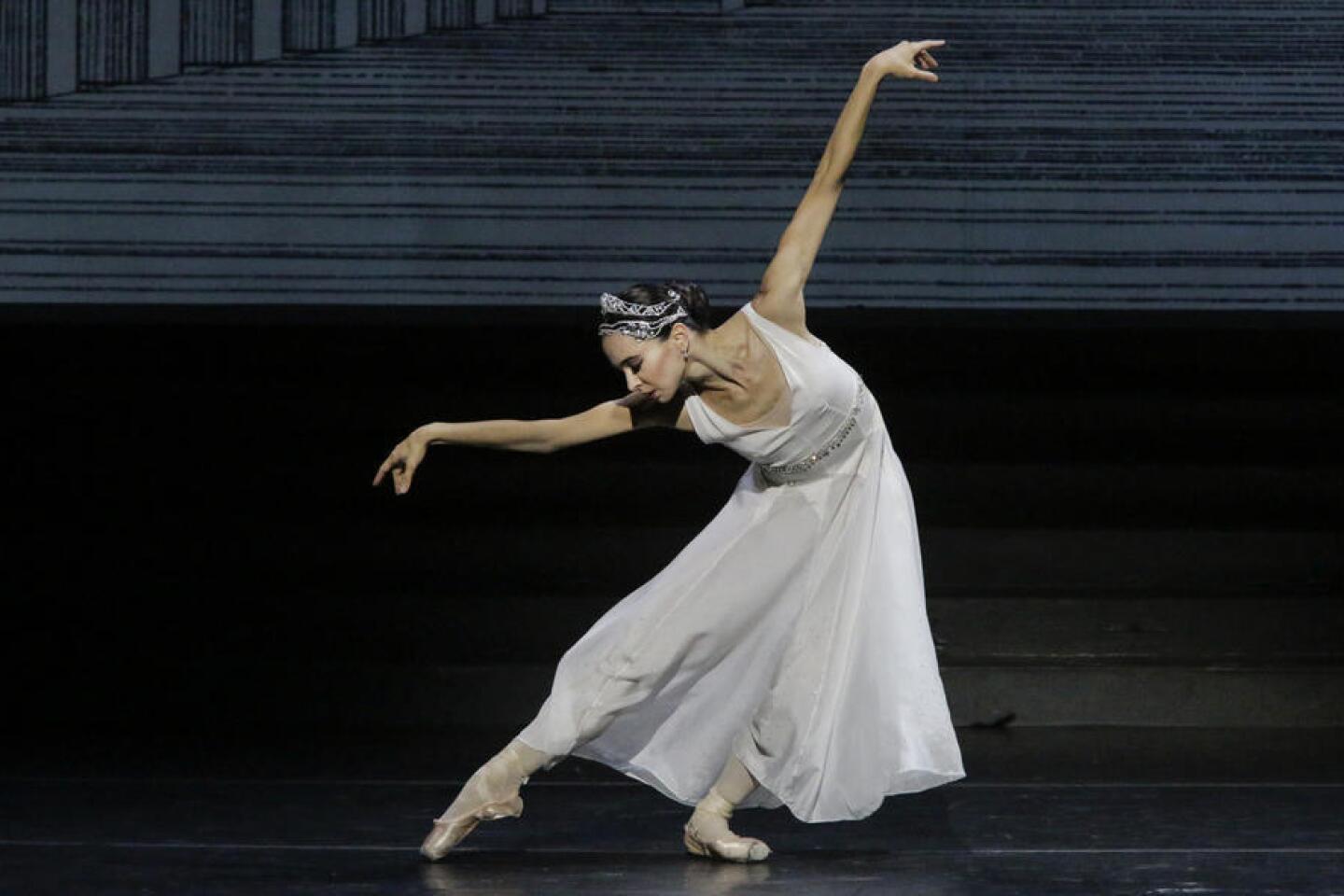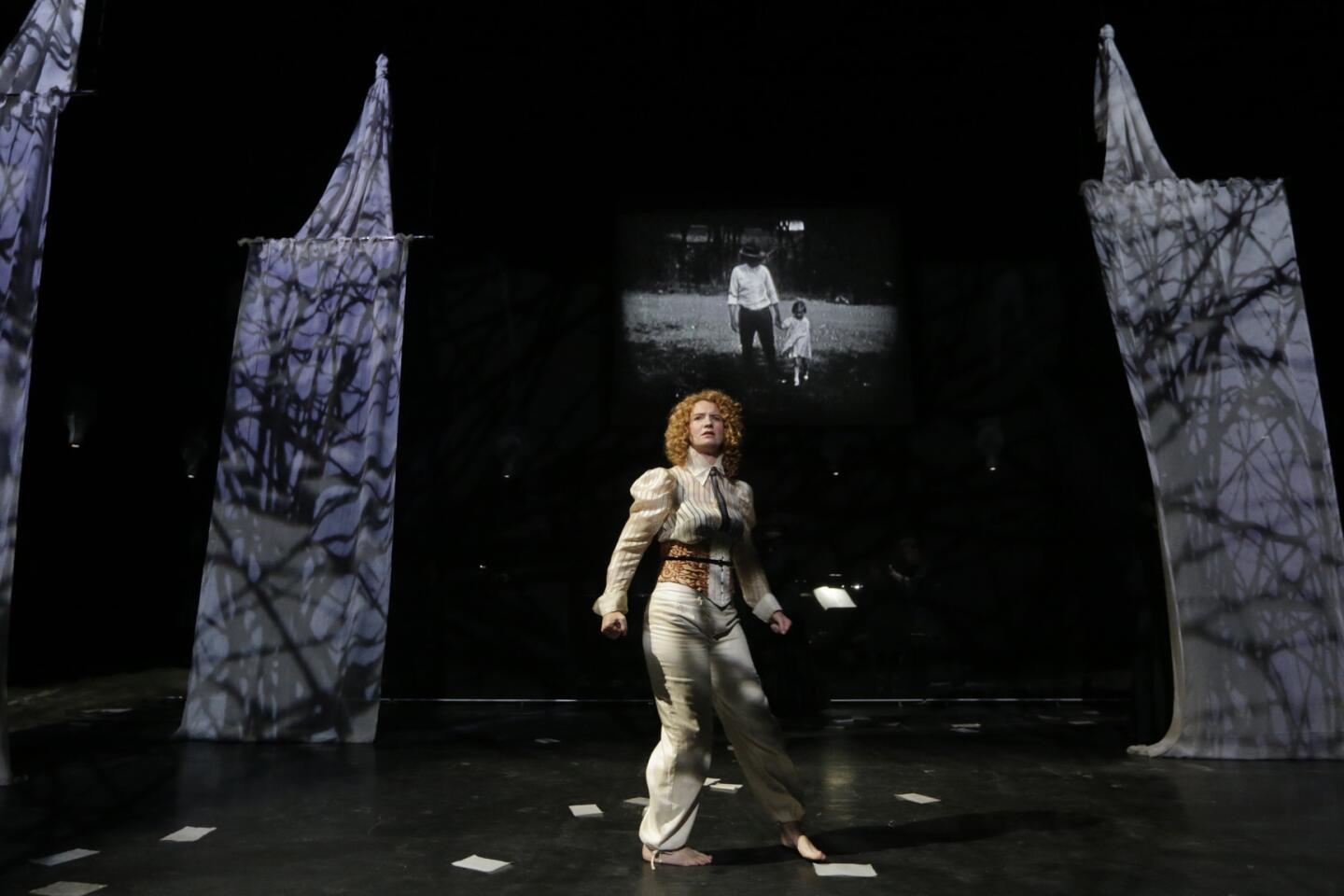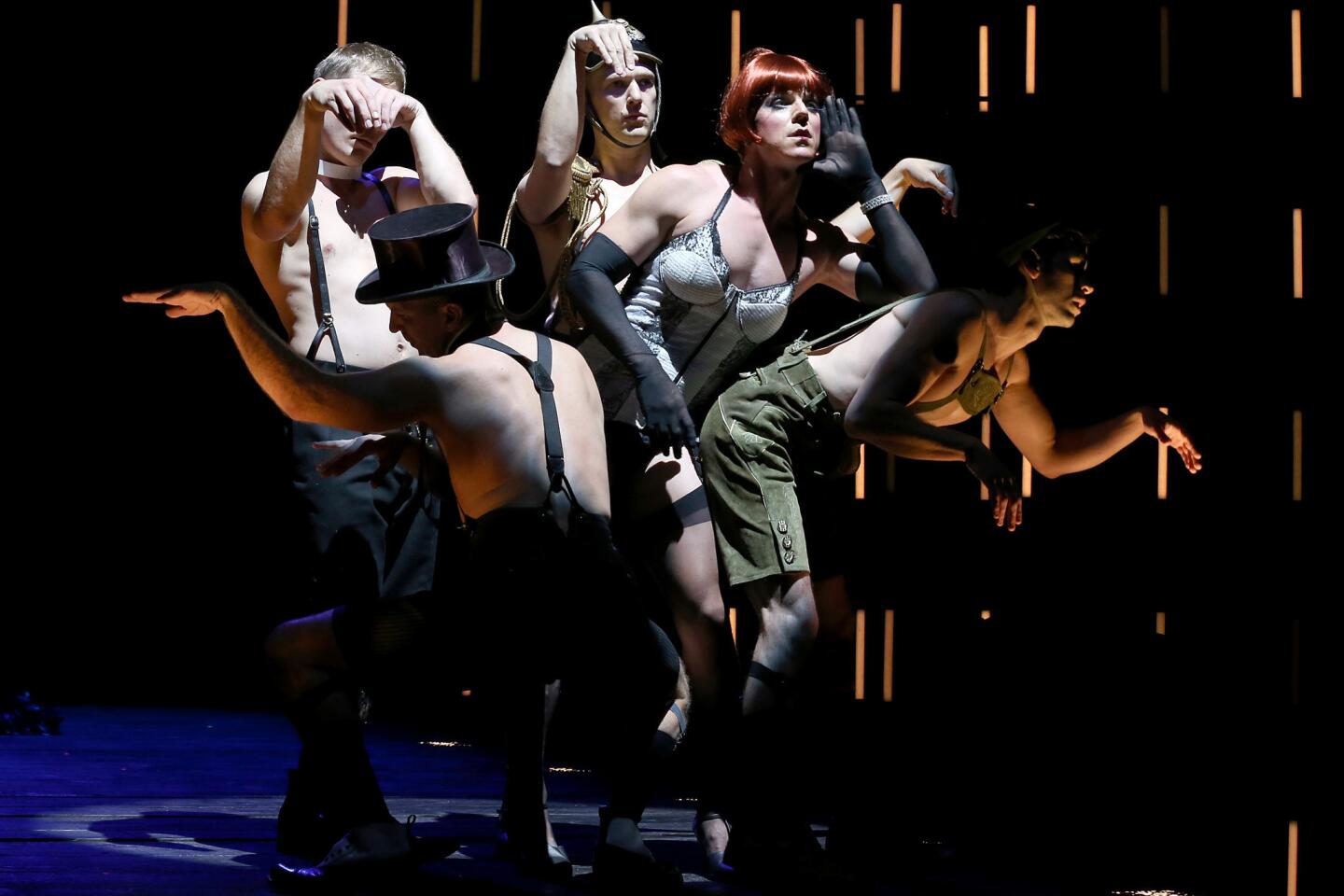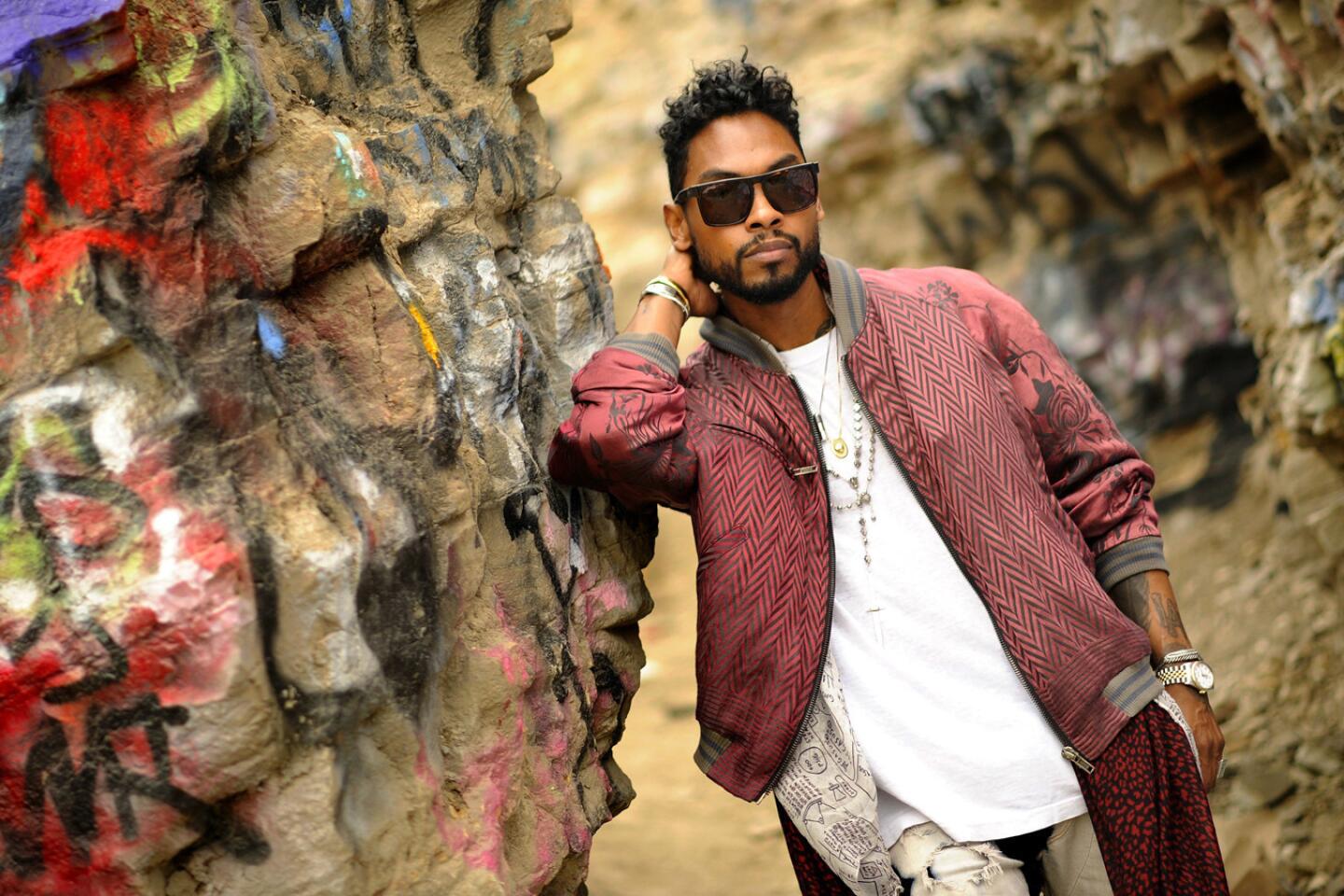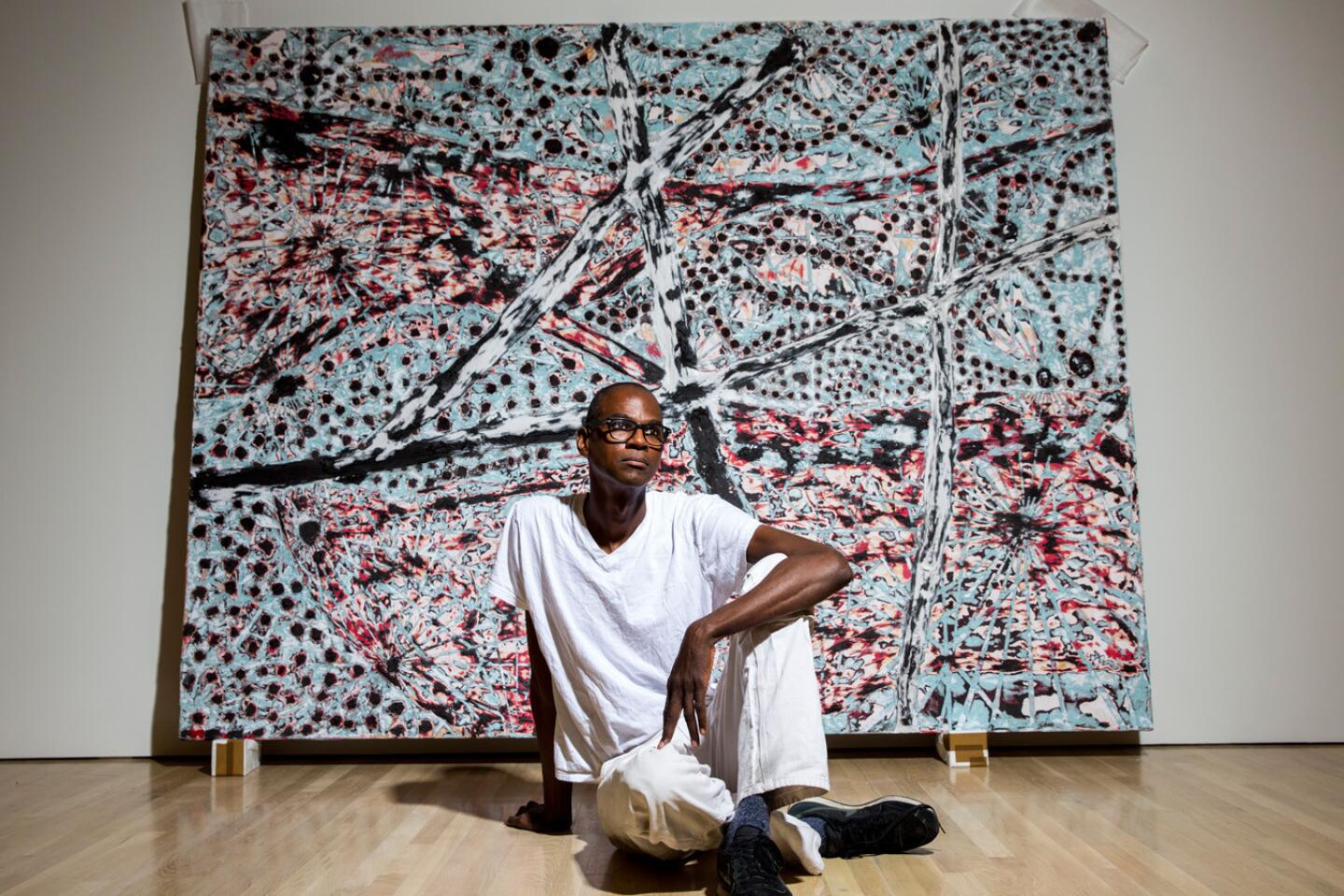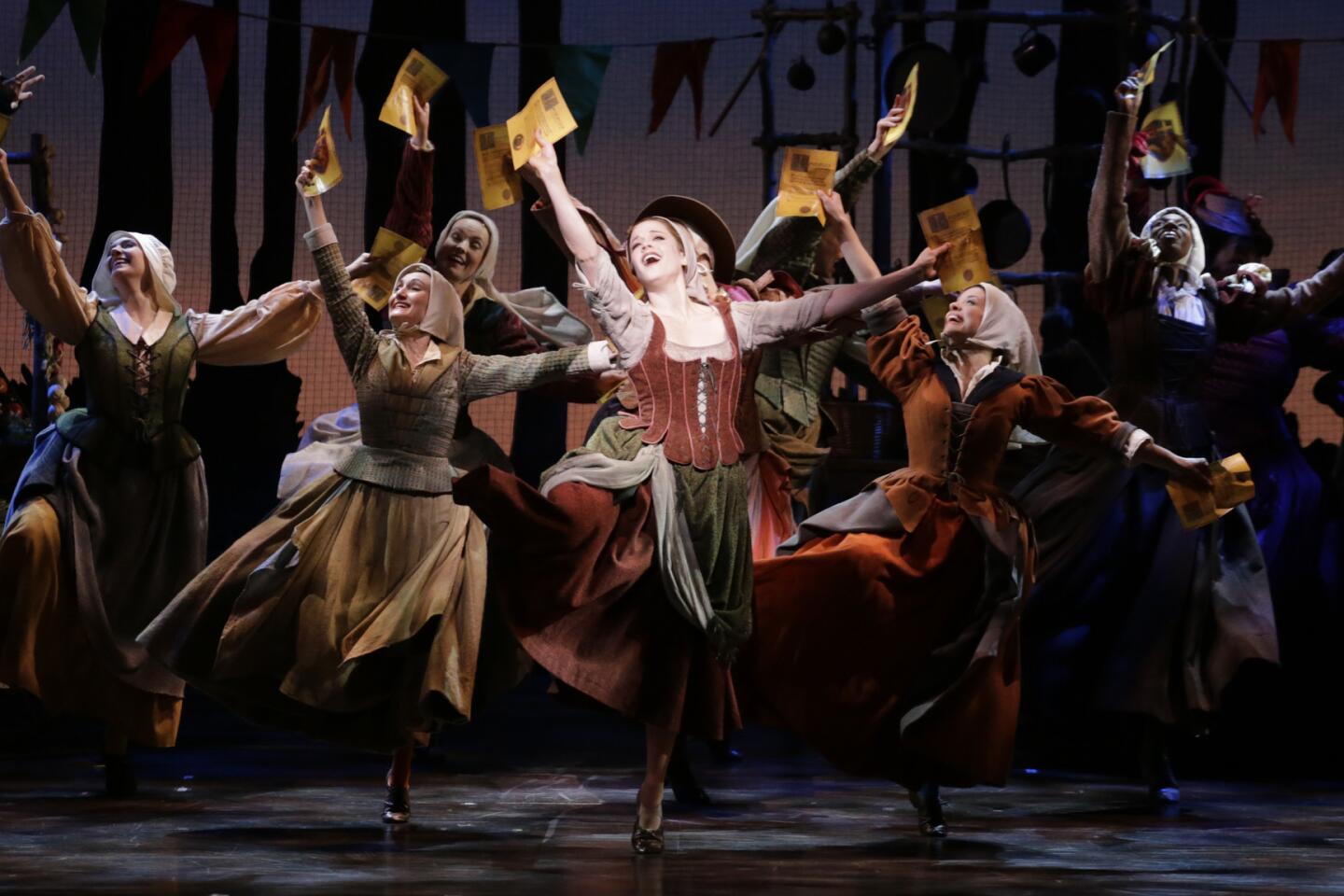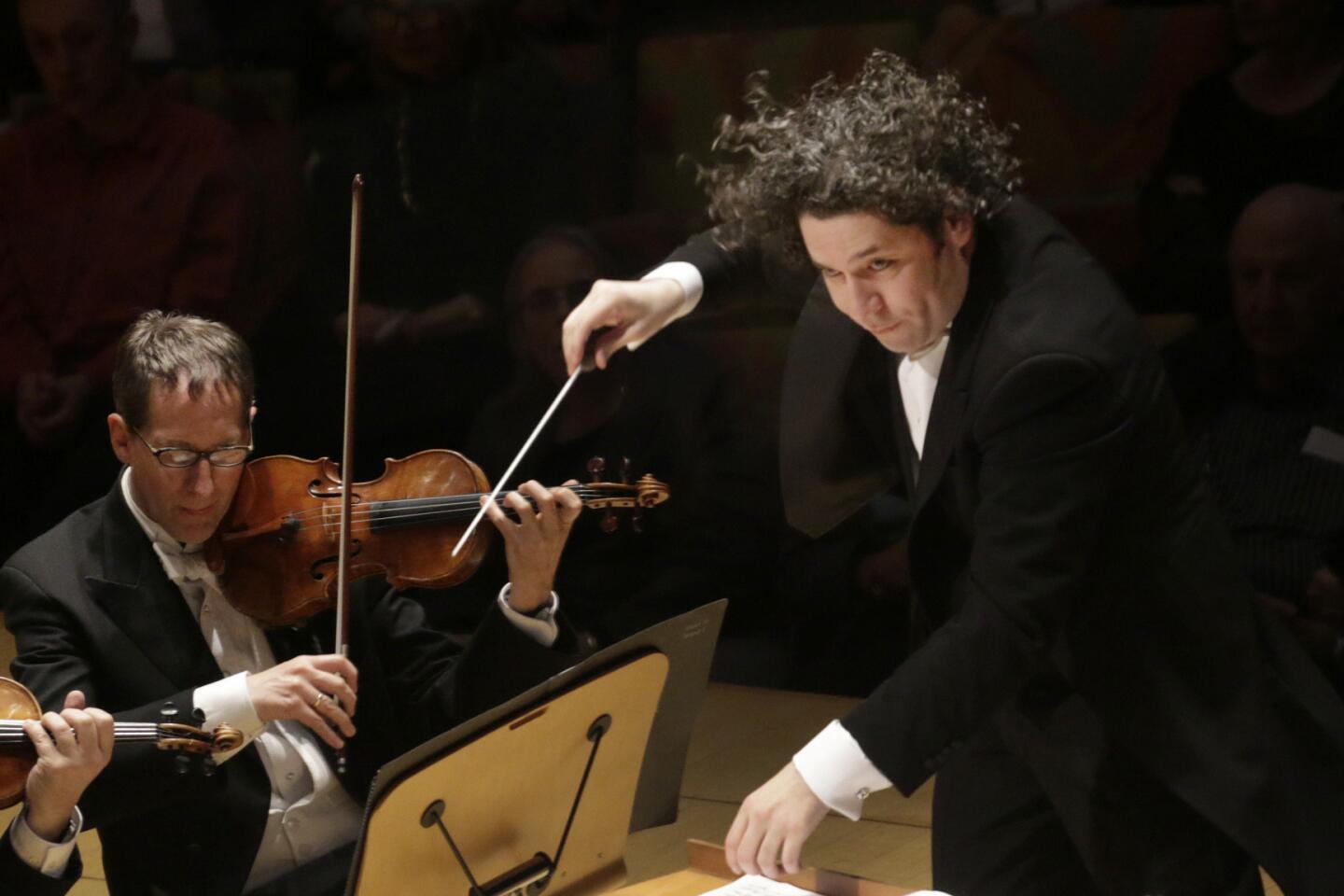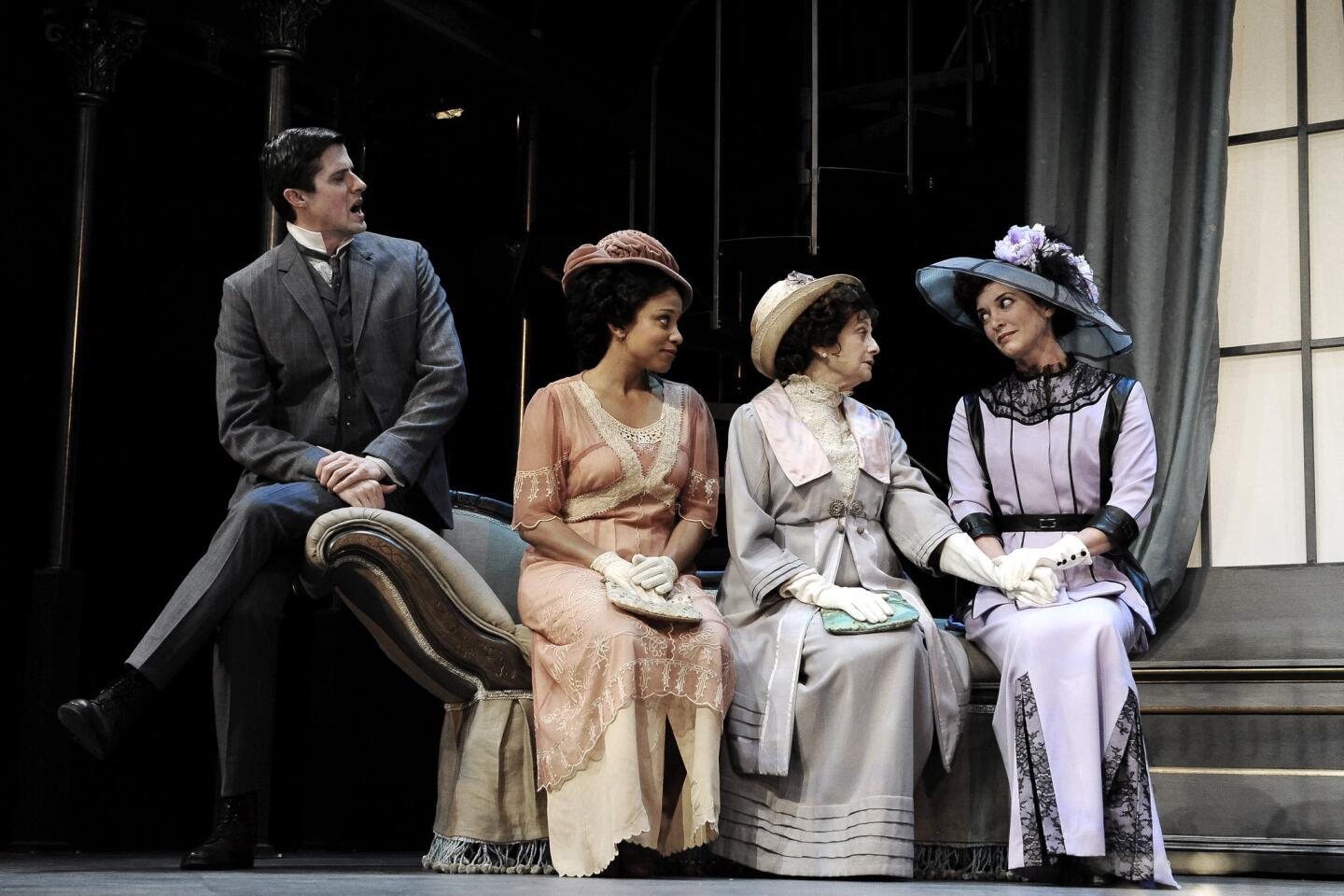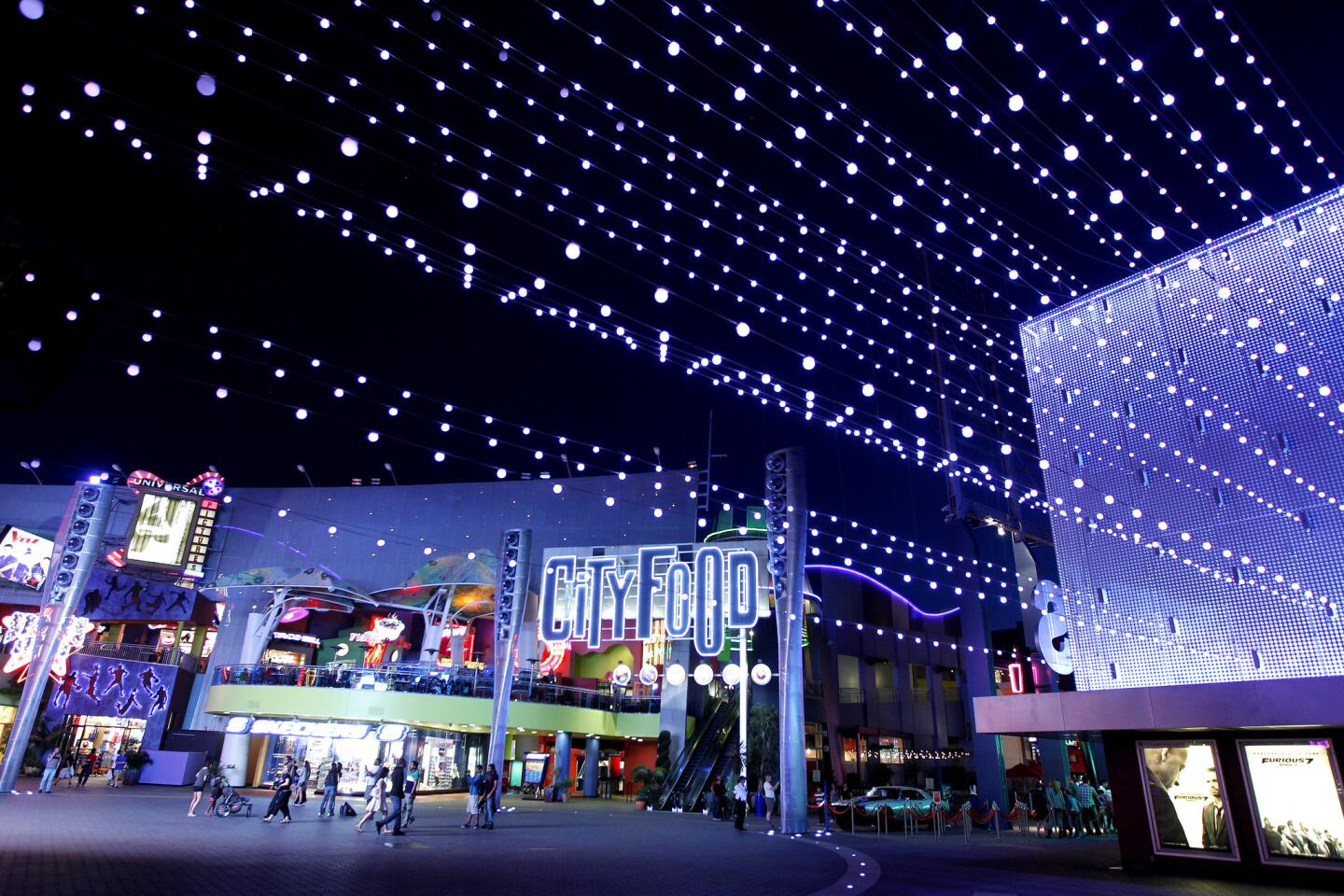Getty purchases Gentileschi’s radiant ‘Danaë,’ now owns 2 of 3 paintings in a set
- Share via
Two down, one to go.
That’s a bit of wishful thinking, but the J. Paul Getty Museum’s acquisition Thursday of Orazio Gentileschi’s magnificent Baroque masterpiece “Danaë” excites the imagination.
The painting is the first in a set of three commissioned from the Rome-based, Pisa-born artist in 1621 by Giovanni Antonio Sauli for his lavish palazzo in Genoa, the booming seaport on Italy’s northwest coast. The second, “Lot and His Daughters,” has been in the Getty’s collection since 1998, where it will now be happily reunited with “Danaë.”
See more of Entertainment’s top stories on Facebook >>
Tantalizingly, the third picture in the celebrated set — which together sealed Gentileschi’s reputation as a major Baroque artist — remains in an unidentified New York private collection. There’s no telling what might happen down the road (my crystal ball is broken), but one can dream.
The purchase required an outlay of $30.5 million during a brief but nerve-racking bidding session at Sotheby’s auction house in New York, but rivals did drop out rather quickly. Much of the big-ticket auction action these days goes to Modern and contemporary art, so those deep pockets were sidelined. And, institutionally, few museums have the Getty’s resources, while voluptuous female nudes don’t go over well in Qatar and Abu Dhabi, where big art museums are being built from scratch with vast oil wealth.
All of that no doubt worked in the Getty’s favor. And ours.
J. Paul Getty Museum’s acquisition of Orazio Gentileschi’s magnificent Baroque masterpiece ‘Danaë’ excites the imagination.
— Christopher Knight, Los Angeles Times Art Critic
The Sauli commission is, indeed, quite bawdy, although the sex is wrapped in the scholarly moral erudition so common to Baroque art. The pictures tell three stories — one pagan, one Old Testament-related and one New Testament — and they move through history from sin to conflicted debauchery to redemption.
Given a patriarchal society, where men rule church and state, women’s sexuality and its evolving relationship to godliness are of course being described (and proscribed) by those with a Y chromosome. The men, while congratulating themselves on the progress society has made, get to look at sexy pictures.
“Danaë,” the pagan delight, is the most dramatic of the three — a full-throated stylistic homage to the inventive genius of Caravaggio, eight years Gentileschi’s junior and a close friend in Rome. In Caravaggio’s wake, Gentileschi replaced his Mannerist stylization with stark naturalism.
Against a rich, dark background, life-size figures are pushed forward and brightly illuminated, like players on a theatrical stage. The picture is all exquisite surfaces, heightening sensuality.
The composition forms a dynamic, off-kilter X, with one line formed by Cupid’s torso, Danaë’s elegantly raised arm and welcoming right hand and the virtually orgasmic shower of gold that represents Jupiter, god of the sky. He has transformed himself in order to sneak into the locked bedchamber and ravish her.
The other, contrasting line of the X-composition is created by Danaë’s naked, alabaster body, plus the radiant play of light that illuminates the voluptuous scene. Her fate is implied in the satin bedcovers tangled around her and unfurling across the cloudlike bed: They are as golden as Jupiter’s miraculous shower cascading from above onto the luminous nude body.
Rather than a scalding satire on corruption, like Dutch painter Hendrik Goltzius’ brilliant, Mannerist take on the story in his 1603 masterpiece at the Los Angeles County Museum of Art, Gentileschi weds stylish aesthetics with almost pure eroticism. A visitor to Sauli’s palazzo would likely know that Perseus, the offspring of the sexual encounter between Danaë and Jupiter, would bring eventual sorrow, accidentally killing her father. Looking at the picture, though, that inevitable tragedy seems remote.
The second painting in the set is the most conceptually shocking, although visually the most chaste. “Lot and His Daughters” huddle for refuge at the mouth of a cave as God destroys Sodom, unseen in the distance but suggested by a darkening sky. With the world collapsing around them, the young women decide they will get their father drunk and sleep with him in order to repopulate the land.
Gentileschi’s primary color scheme of red, yellow and blue underscores the basics — an ancient, pre-Christian incest story recounted in Genesis. A blouse slipped off a shoulder here, a drunken man’s head nestled in a woman’s lap there — the taboo encounter has found a way to be indirectly told.
Scholars have long argued the story’s meaning, but one thing is certain: In Gentileschi’s cycle, women are regarded as descendants of Eve, whose transgression in the Garden of Eden caused nothing but trouble. The ravished (Danaë) has become the ravisher (Lot’s daughters).
Which brings us to the final, “missing” canvas of the three: “Mary Magdalen in Ecstasy.” A hermit living a life of meditation in the wilderness, atoning for her wanton past, she’s the Christian sinner redeemed by repentance.
In Gentileschi’s composition, Mary’s body reclines next to a skull against a stone slab, reminiscent of a tomb. Her posture is an ecstatic swoon — head tossed back, mouth open and glassy eyes rolling back.
Divine love has traveled a difficult path from the pagan depiction of “Danaë.” Carnal union is finally replaced with spiritual communion — for Mary Magdalene, at least, if not necessarily for the painting’s bemused audience.
The trio of paintings was included in “Orazio and Artemisia Gentileschi,” a revelatory, well-received 2002 exhibition at New York’s Metropolitan Museum of Art of paintings by the father and his gifted painter-daughter. (The show was also seen in Rome and St. Louis.) After that success, the three Sauli canvases traveled on their own to the Getty, two for a brief stay.
Now, at least two of them will stay put. The Getty hopes to have “Danaë” installed with “Lot and His Daughters” by the end of February. Prepare to swoon.
More to Read
The biggest entertainment stories
Get our big stories about Hollywood, film, television, music, arts, culture and more right in your inbox as soon as they publish.
You may occasionally receive promotional content from the Los Angeles Times.
